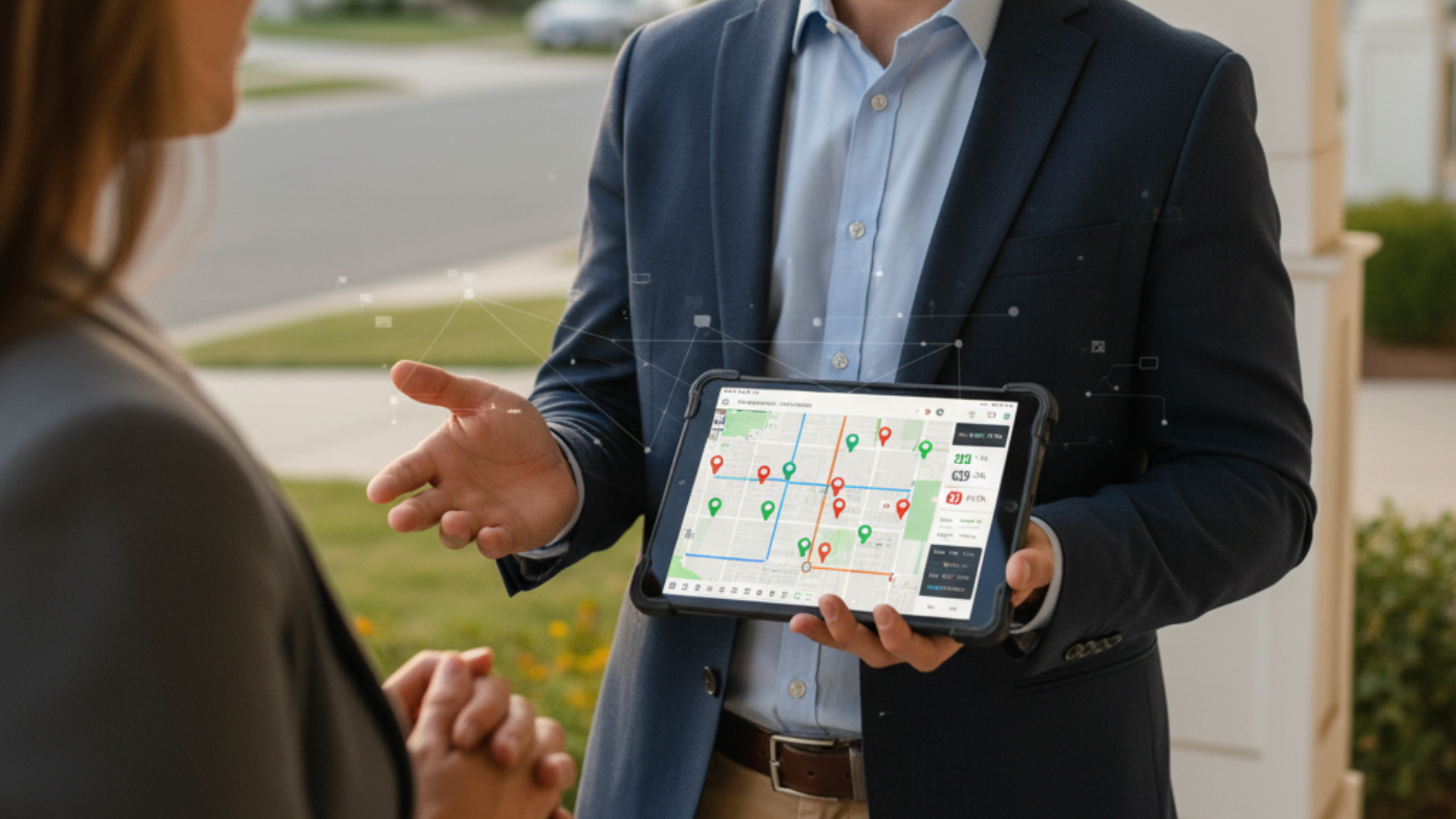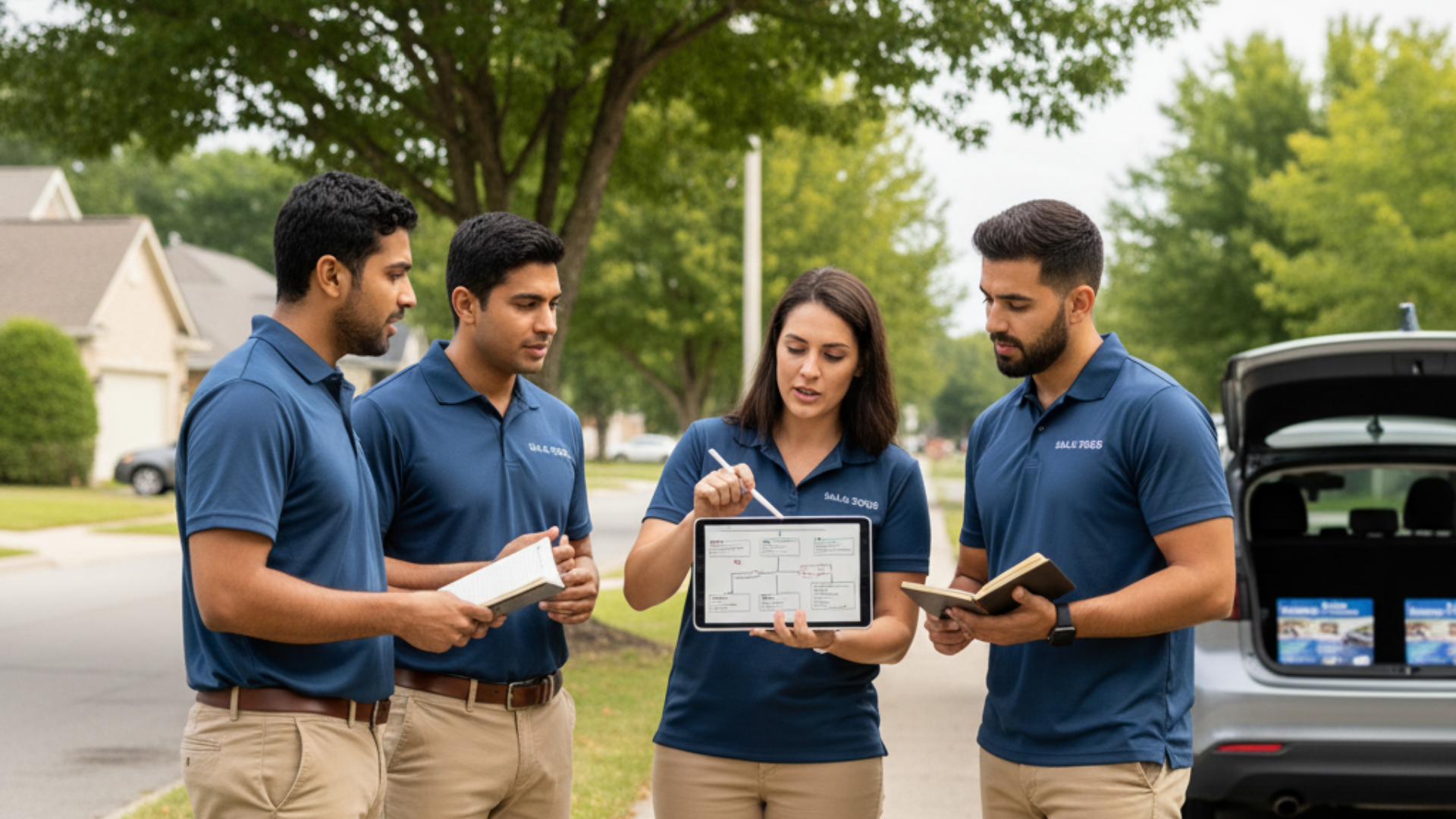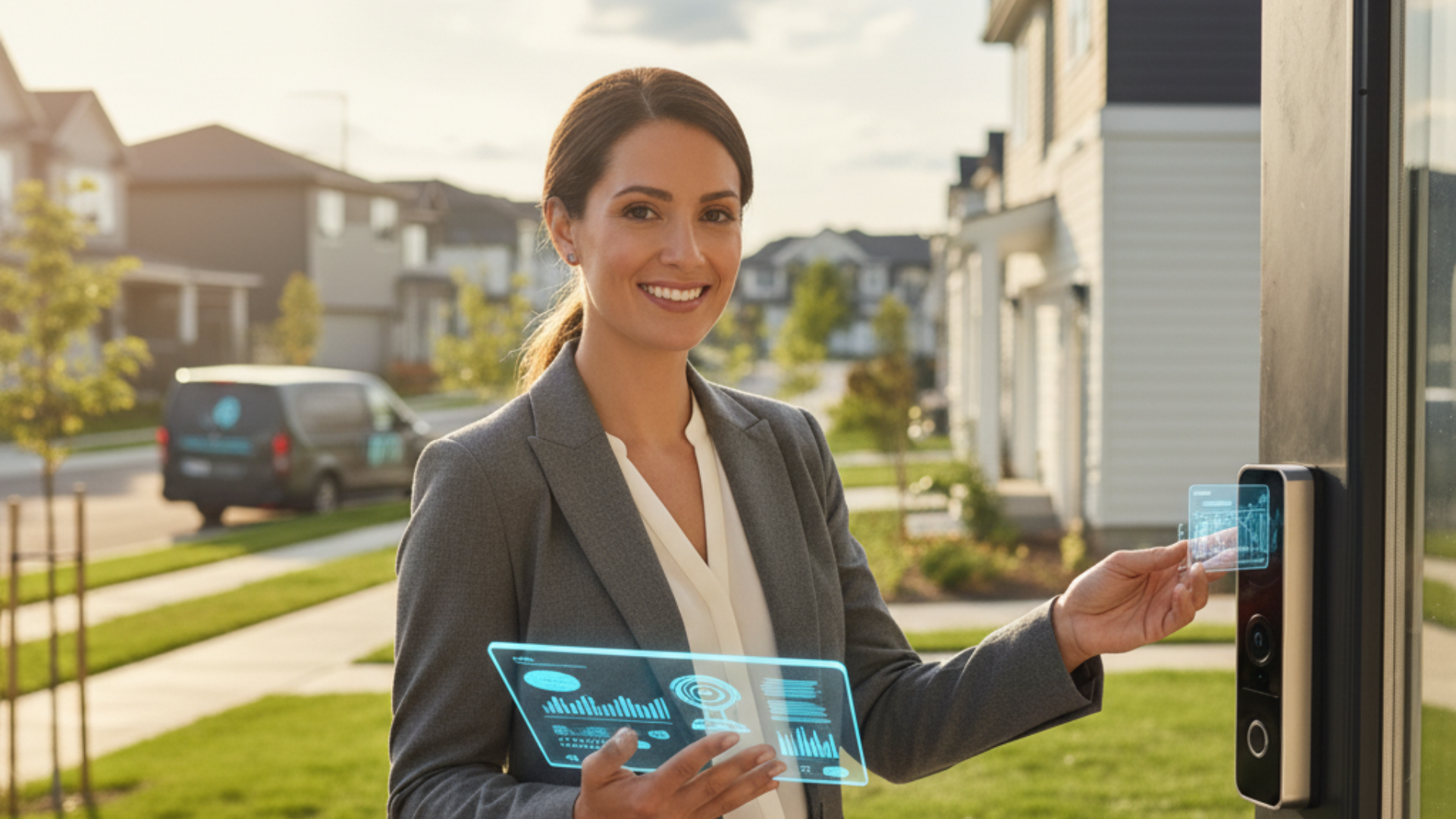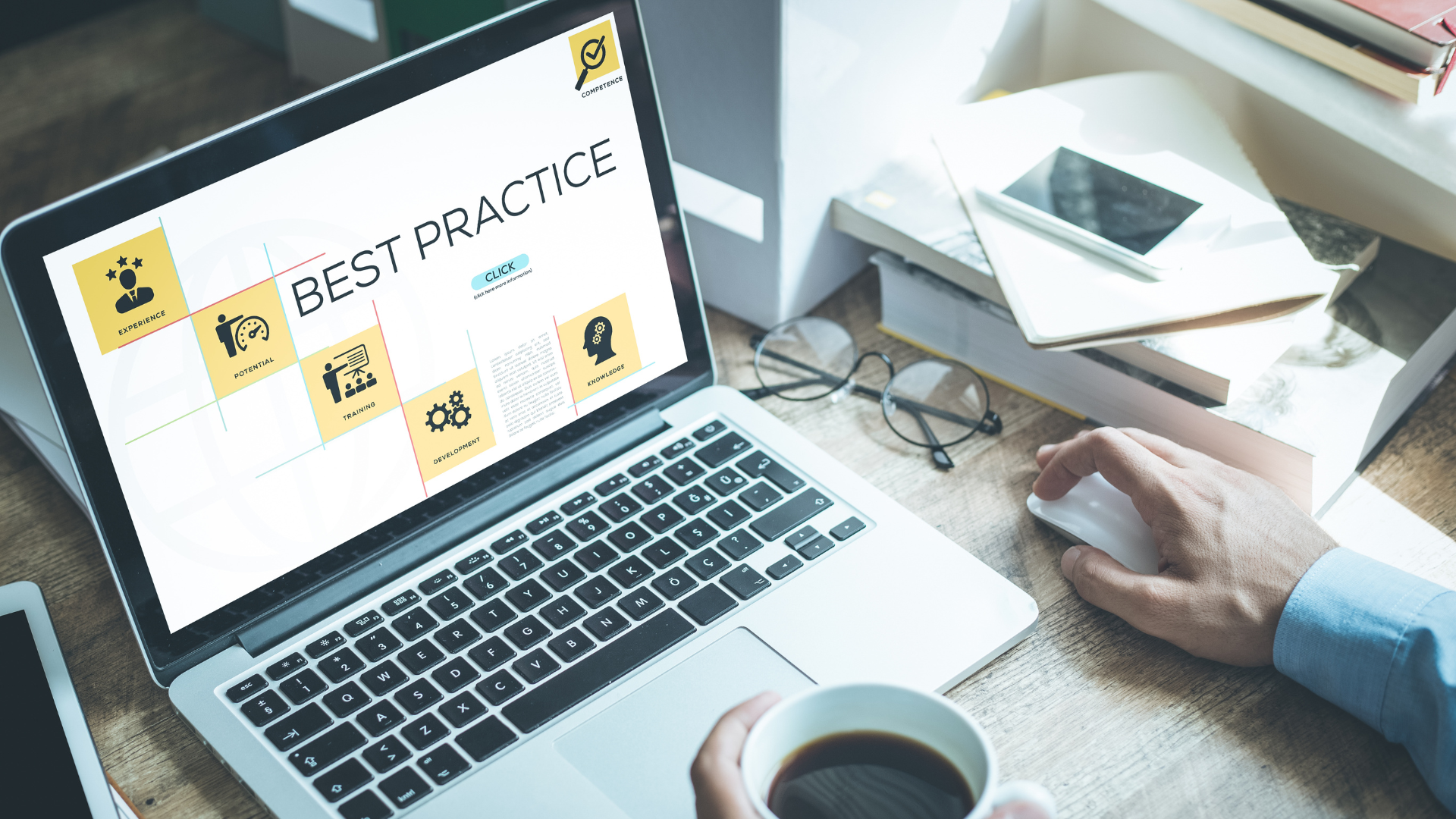We’re used to getting small hits of motivation from apps and platforms, like a badge for a workout, a streak for posting, a points tally that climbs. These small nudges
punch above their weight by consistently encouraging people to act.
Now imagine applying this same method to your sales team. Instead of waiting weeks for performance reviews, reps get continual recognition: points for quality calls,
levels for consistent pipeline activity, and leaderboards that highlight progress. The result is a more engaged team that responds to real-time feedback, not distant reports.
How Sales Gamification Boosts Motivation and Results in 2025
This guide gives hands-on, metric-focused ways to use sales gamification so activity actually turns into revenue.
You’ll get the gamification tools, game mechanics, contest templates, and software criteria needed to design contests that lift activity, coaching, and close rates for both inside and field teams.
Key Takeaways
- Sales gamification uses game mechanics like points, leaderboards, and rewards to drive engagement.
- A smart gamification strategy can increase motivation, collaboration, and results.
- Knockbase offers real-time feedback, contests, and recognition tools that help field sales teams stay competitive and inspired.
- Choosing the best sales gamification software requires looking at features beyond just leaderboards.
Why Sales Teams Lose Engagement
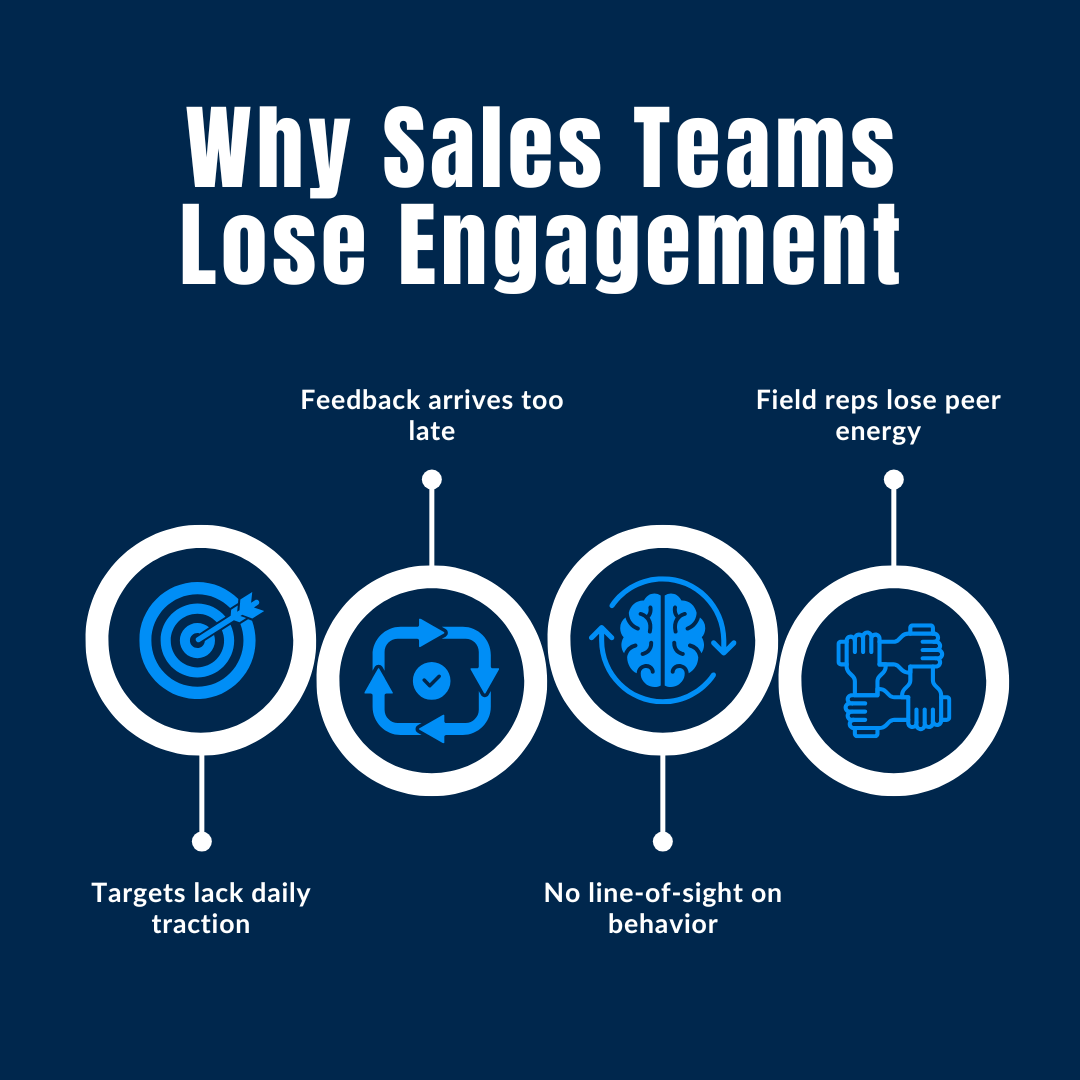
Before we dive into solutions, let's take a closer look at what actually drains reps day-to-day.
1. Targets lack daily traction.
When targets live only as quarterly or monthly numbers, they feel distant and abstract. Reps can’t easily connect a single cold call or a short follow-up to a far-off quota; as a result, daily activity loses urgency.
That gap creates two predictable behaviors: either reps focus on the easiest tasks that give the illusion of work (emails, admin), or they defer effort until the period’s end when pressure spikes.
The Psychology Behind: Humans respond to proximal, not distant, incentives. If the outcome sits weeks away, motivation to grind through repetitive sales activities collapses. The result is inconsistent activity, missed early-stage signals, and a team that only “shows up” when the scoreboard already matters.
2. Feedback arrives too late.
When a rep makes a strong outreach or saves a deal but hears nothing until a weekly or monthly review, the brain doesn’t form the quick reinforcement loop that builds habit.
The Psychology Behind: Delayed feedback blunts learning; mistakes aren’t corrected in the moment, so the same unproductive behaviors repeat. Recognition and corrective signals that come days or weeks after an action are weak motivators.
3. No line-of-sight on behavior
Managers see revenue numbers but not the small, repeatable behaviors, quality calls, timely follow-ups, proposal iterations, that predict those results.
Reps likewise can’t judge whether their day-to-day choices matter; for example, if they can’t see how a particular habit moves the needle, they deprioritize it.
The Psychology Behind: This opacity fosters mistrust: top performers hoard best practices because they don’t feel recognized for process wins, while sales managers fail to provide the targeted guidance underperformers need to improve.
4. Field reps lose peer energy.
Field sellers spend long stretches on the road, and this can make them feel disconnected from their peers and the larger team's mission. Without that shared energy, even high-performing reps can start to disengage, affecting the morale of the entire sales team .
The Psychology Behind: Humans are wired for social reinforcement, quick nods, recognition, and visible comparison with peers, all of which fuel motivation.
When field reps operate in isolation, they lose those micro-rewards and accountability cues. The absence of peer interaction reduces urgency, lowers competitive drive, and increases the risk of disengagement.
What is Sales Gamification?
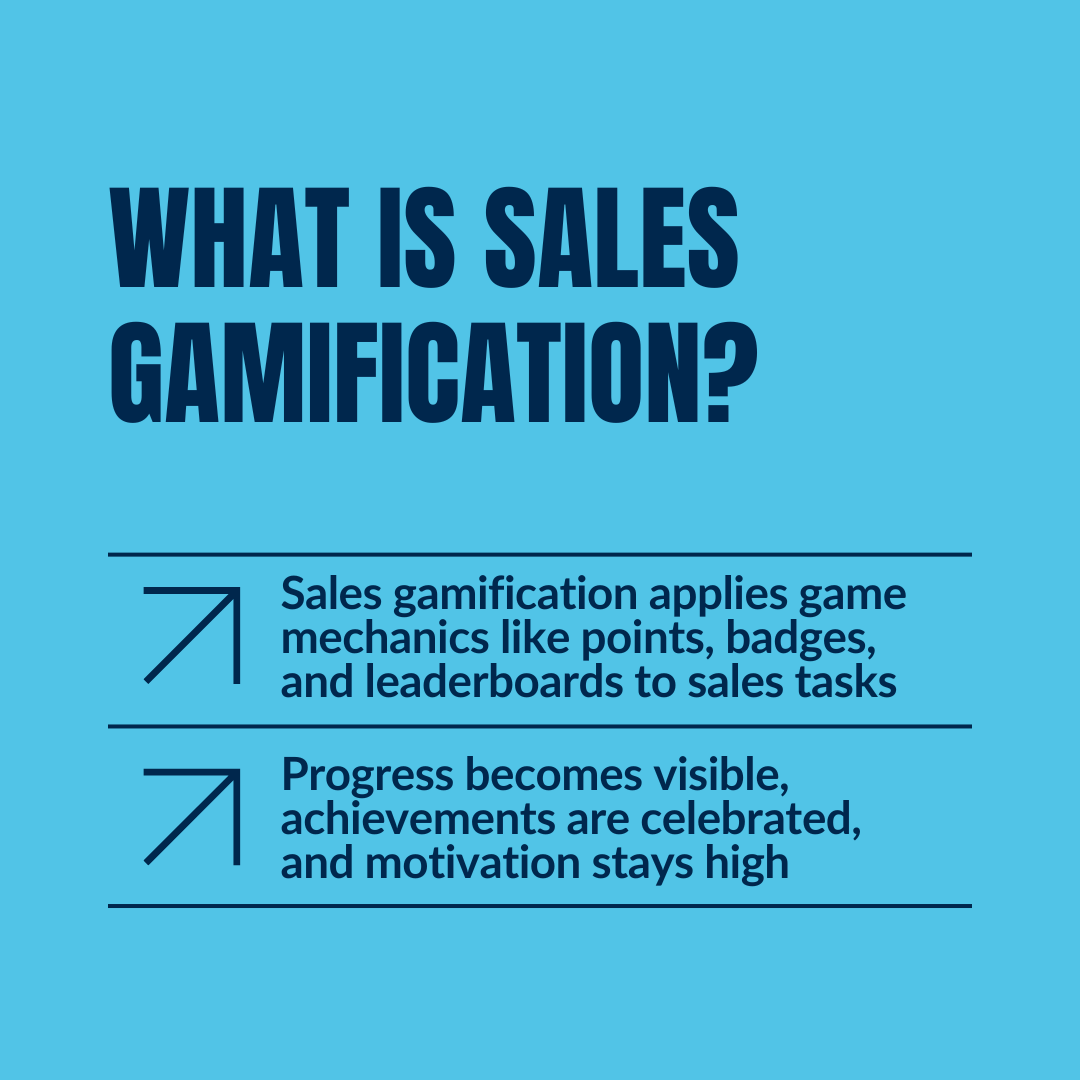
Sales gamification is the practice of weaving game mechanics like points, badges, and leaderboards into everyday selling tasks. Instead of quotas feeling like chores, reps experience their work as a series of game-like elements and achievable challenges with rewards along the way.
How businesses gamify sales
Companies assign points to common activities, such as logging calls, booking demos, or sending proposals. These points feed into leaderboards, unlock badges, or contribute to short contests.
The effect is simple but powerful: progress becomes visible, achievements are celebrated, and motivation stays high day after day.
How a weekly meeting turns into motivation on Knockbase
On Knockbase, a rep who hits their weekly meeting goal doesn’t just tick a box. They earn points that are updated in the leaderboard in real time, instantly showing their progress alongside peers.
A badge or team notification follows, giving recognition in the moment. That quick loop of effort → visibility → reward turns a routine meeting into a motivational boost, encouraging reps to keep building momentum.
Game Mechanics That Motivate Sales Reps
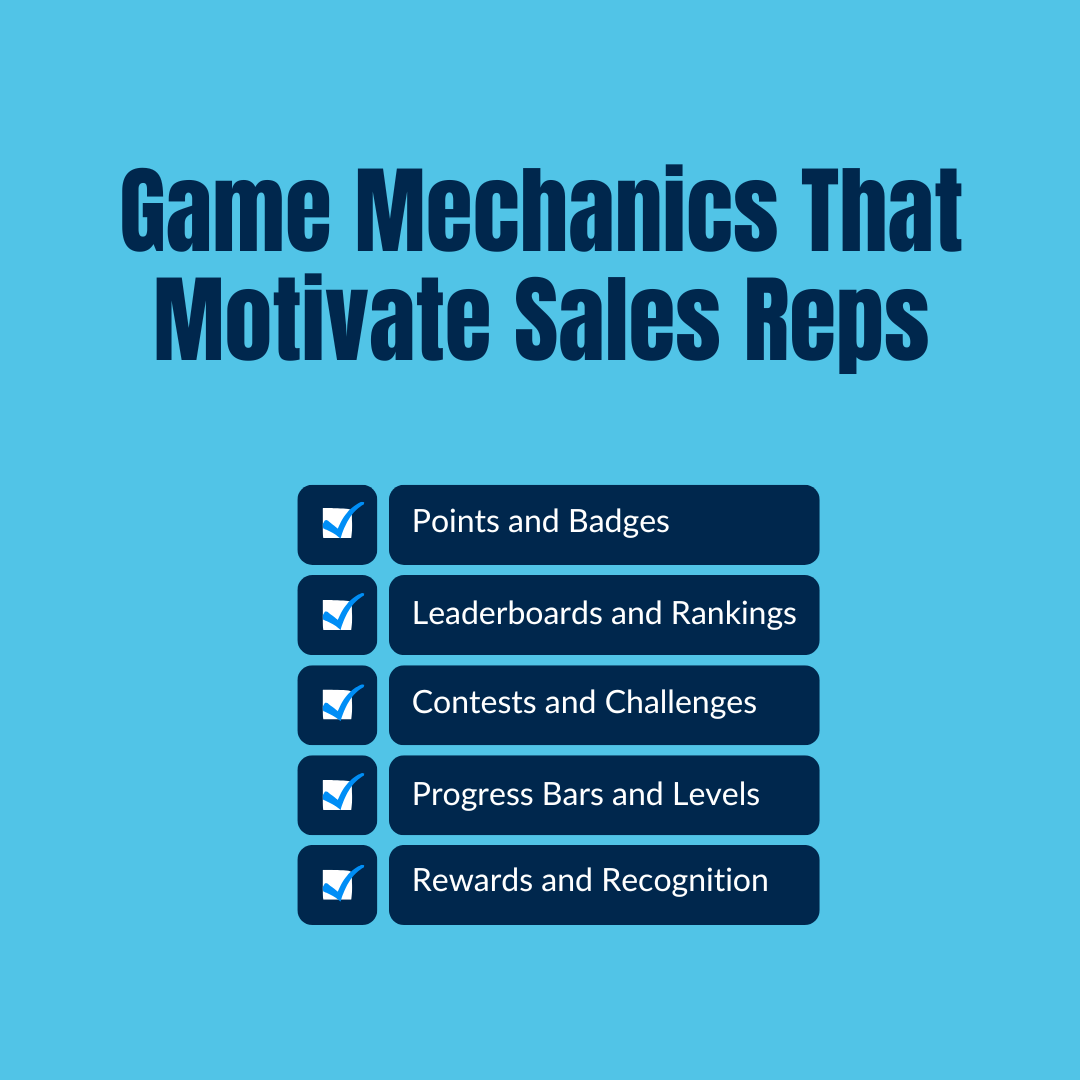
Gamification works because it taps into the same human instincts that make games addictive. The drive to achieve, compete, and be recognized.
In sales, these instincts are activated through game mechanics: the rules and structures that turn routine tasks into engaging challenges.
Instead of waiting months for recognition, reps experience quick wins, visible progress, and healthy competition that fuels daily activity.
Let’s break down the most effective game mechanics that keep sales teams motivated.
1. Points and Badges
Points give weight to everyday actions. Each call made, demo booked, or proposal sent translates into a visible score, so effort feels productive even before a deal closes.
On the other hand, Badges celebrate milestones, like “10 new meetings this week,” and add a collectible element that reps take pride in. Together, points and badges turn invisible effort into visible achievement.
2. Leaderboards and Rankings
Nothing motivates like seeing your name climb a leaderboard. Rankings fuel a healthy competitive spirit by making performance visible to peers. Instead of vague “top performer” praise, reps see exactly where they stand daily, weekly, or by region.
This visibility encourages friendly competition, highlights top performers, and keeps teams striving to improve. Tools like Knockbase refresh leaderboards in real time, so every small win feels meaningful and fuels momentum across the team.
Knockbase explores this further in Drive Door-to-Door Sales Growth with Gamified Competition
3. Contests and Challenges
Sales contests break monotony and boost sales performance. Think “most follow-ups completed in 48 hours” or “highest demo-to-close rate this month.” These challenges focus effort on specific pipeline stages that need attention.
They’re especially useful when managers want to direct focus toward specific activities without overwhelming the team.
4. Progress Bars and Levels
Progress bars make effort visible by showing exactly how close a rep is to a goal. Levels like "Bronze, Silver, and Gold" reward consistent activity over time, not just one-off wins. This helps motivate steady performers who might not top a leaderboard but thrive on visible progress.
5. Rewards and Recognition
Game mechanics mean little without recognition. Rewards don’t have to be extravagant, but a badge, a shoutout, or even a small perk can reinforce positive behavior when it happens.
The key is speed: effort → recognition → reinforcement. When wins are noticed in the moment, morale stays high, and behaviors are more likely to repeat.
Building an Effective Gamification Strategy
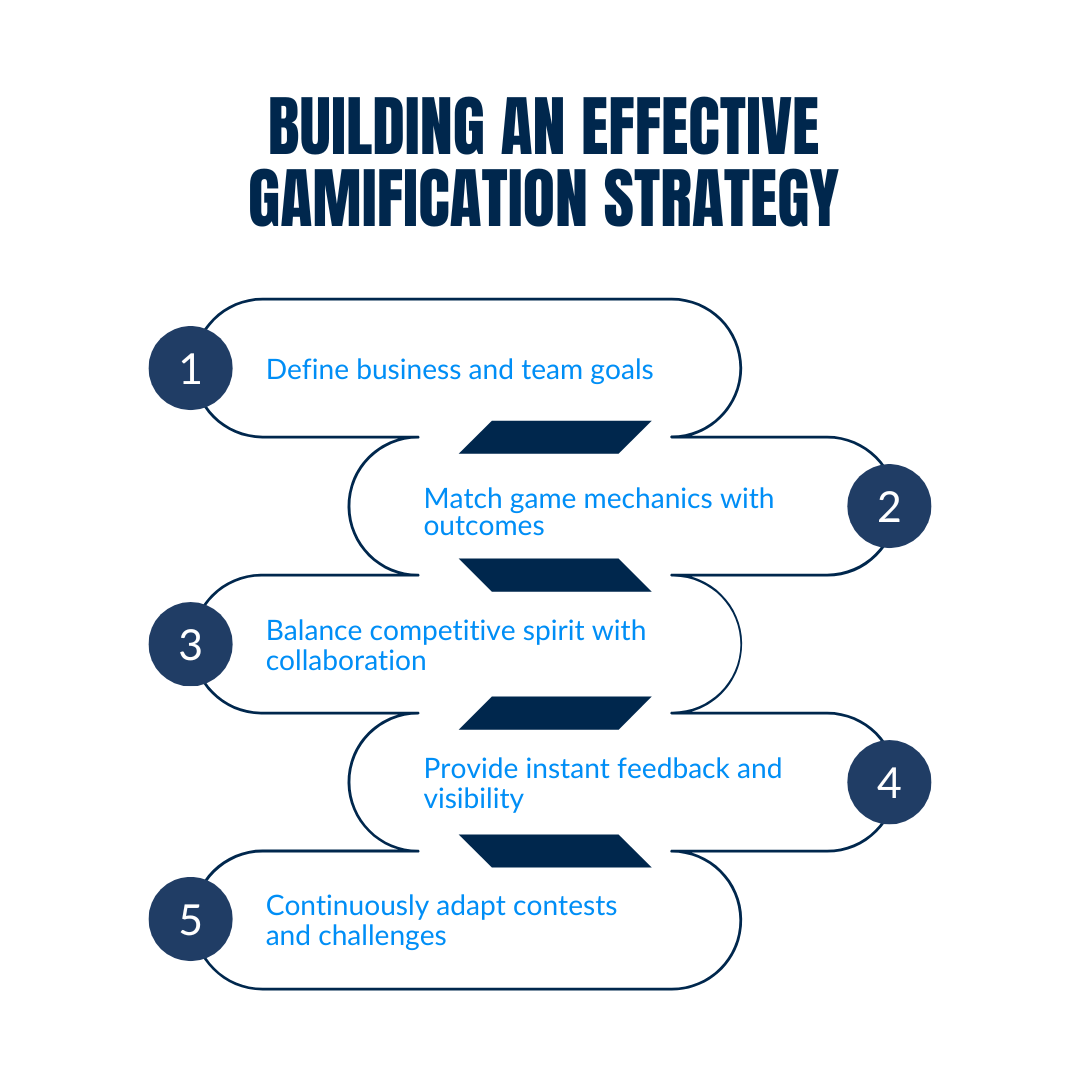
Gamification isn’t just about slapping points and badges on a dashboard; it only works when there’s a clear strategy behind it.
A strong gamification strategy connects daily sales activities to business outcomes, balances competition with collaboration, and ensures that recognition feels meaningful rather than gimmicky.
Here’s how to build a gamification strategy that actually motivates sales reps:
Step 1: Define business and team goals.
Gamification should align with what the business needs most, whether it's more qualified leads, shorter sales cycles, or higher close rates.
Start by identifying 2–3 priority outcomes, then design challenges and point systems that directly encourage the behaviors that drive those results.
Step 2: Match game mechanics with outcomes.
Not all mechanics work for all goals. For example:
- Use leaderboards when you want to boost activity volume (calls, demos).
- Use badges and levels when consistency matters (pipeline hygiene, timely follow-ups).
- Use contests to generate short-term bursts (end-of-quarter push).
Step 3: Balance competitive spirit with collaboration.
A leaderboard-heavy system can backfire if it creates toxic competition. Mix in mechanics that encourage teamwork, such as team-based contests, peer recognition badges, or collective milestones. This way, reps stay competitive while also supporting one another.
Step 4: Provide instant feedback and visibility into progress.
The motivational power of gamification comes from instant feedback. So, recognition delayed by weeks loses impact.
Therefore, ensure your system updates leaderboards, progress bars, and notifications in real time so reps feel rewarded in the moment they complete a task.
Step 5: Continuously adapt contests and challenges.
Gamification loses steam if challenges never change. So, rotate contests weekly or monthly, adjust point values when priorities shift, and introduce new rewards to keep things interesting. The best systems evolve alongside business needs and rep feedback.
Examples of Gamification in Action
Theory only goes so far. To see how gamification actually energizes sales teams, let's look at practical use cases. These examples show how specific mechanics like contests, recognition, and real-time updates play out in day-to-day selling.
1. Daily Micro-Contests
Quick contests like “fastest rep to log 5 follow-ups today” create bursts of activity. They’re lightweight, easy to launch, and give reps an immediate sense of accomplishment. Because the time frame is short, even newer or quieter reps feel like they have a fair shot at winning.
2. Monthly Sales Challenges
Larger, themed challenges stretch over weeks and encourage persistence. For example: “highest demo-to-close ratio this month.” These contests keep energy alive between quota cycles and spotlight behaviors that directly impact revenue.
3. Peer-to-Peer Recognition
Not every motivational boost has to come from a manager. Peer recognition features like awarding kudos badges for teamwork or sharing quick shoutouts build community and encourage positive behavior. When reps see recognition coming from colleagues, it strengthens collaboration as much as competition.
Role of Sales Coaching in Gamification
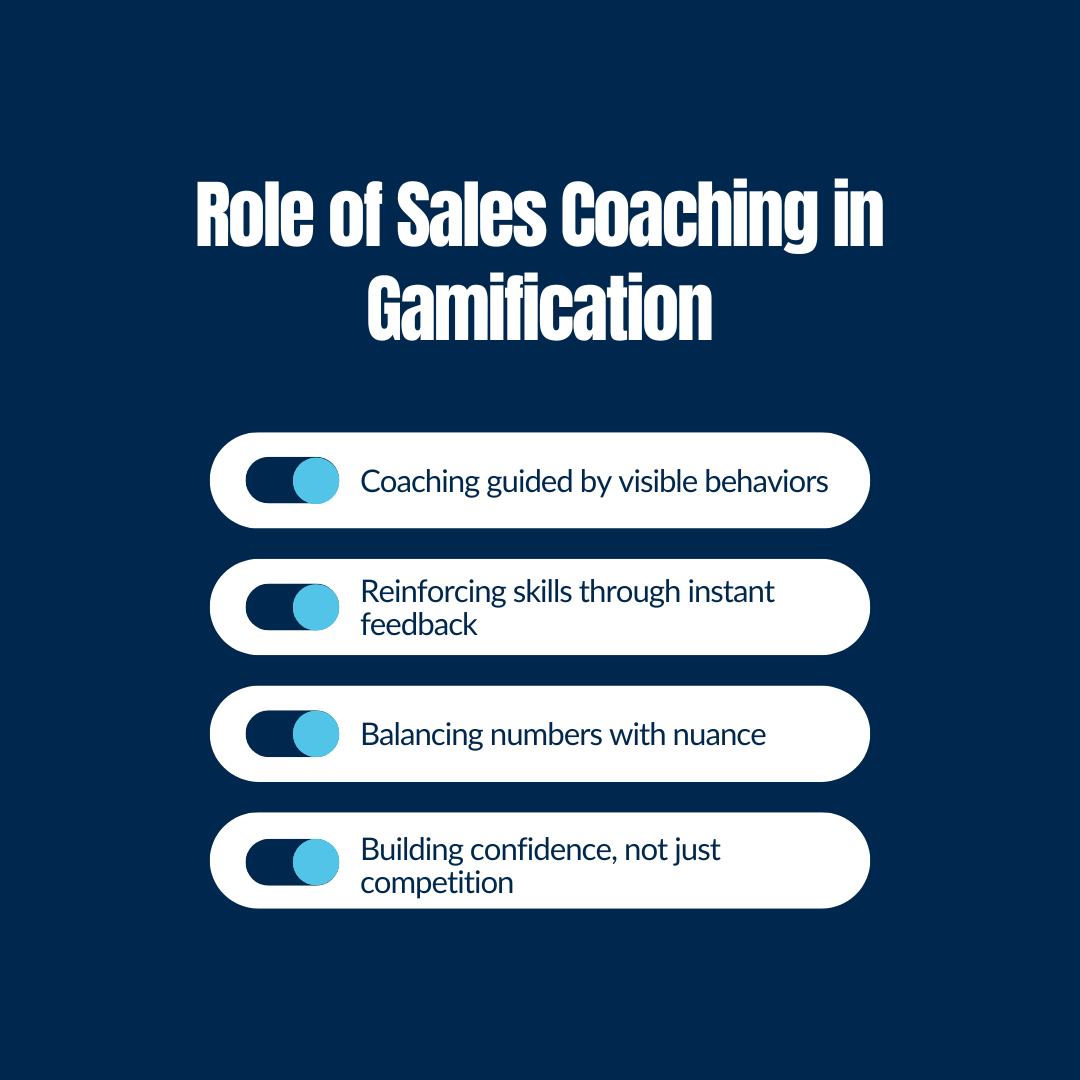
Gamification alone can spark activity, but without coaching, it risks becoming a scoreboard with no lasting improvement.
The real power emerges when gamification and sales coaching work together: one motivates reps to act, while the other helps them refine those actions into repeatable, high-quality habits.
1. Coaching guided by visible behaviors
Gamification shines a spotlight on what reps are actually doing, like calls logged, follow-ups sent, and demos booked.
Coaching then turns that visibility into a conversation: “I noticed you’re great at booking demos, but your close rate dips at proposals. Let’s practice that stage.”
Instead of abstract advice, managers can tailor sessions according to the precise behaviors revealed through gamification data.
2. Reinforcing skills through instant feedback
Gamification delivers immediate recognition, but it’s coaching that explains why something worked or didn’t.
When a rep earns points for rapid follow-ups, the coach can step in to reinforce why speed matters for conversions. This transforms recognition into learning, ensuring good habits stick instead of being one-off bursts of effort.
3. Balancing numbers with nuance
Leaderboards and points reward volume, but sales coaching ensures quality isn’t sacrificed for activity. A coach can use gamification data to spot when reps are gaming
the system (e.g., logging calls without meaningful conversations) and redirect focus toward value-driven selling. This balance prevents gamification from becoming a shallow race.
4. Building confidence, not just competition
For some reps, constant comparison can feel discouraging. Coaching provides the safety net, a one-on-one environment where managers highlight strengths, give constructive feedback, and build confidence.
Gamification supplies the external motivation, while coaching nurtures the internal belief reps need to sustain performance over time.
5. Creating a growth culture
When paired, gamification and coaching shift the sales environment from “hit quota or miss” to “learn, improve, and win.” Coaching makes the data personal and developmental, while gamification keeps the energy high and visible.
Together, they build a culture where progress is celebrated, learning is continuous, and reps are motivated to push themselves without burning out.
For a detailed explanation, read: How Knockbase’s Real-Time Reporting Transforms D2D Sales Management
Choosing the Best Sales Gamification Software
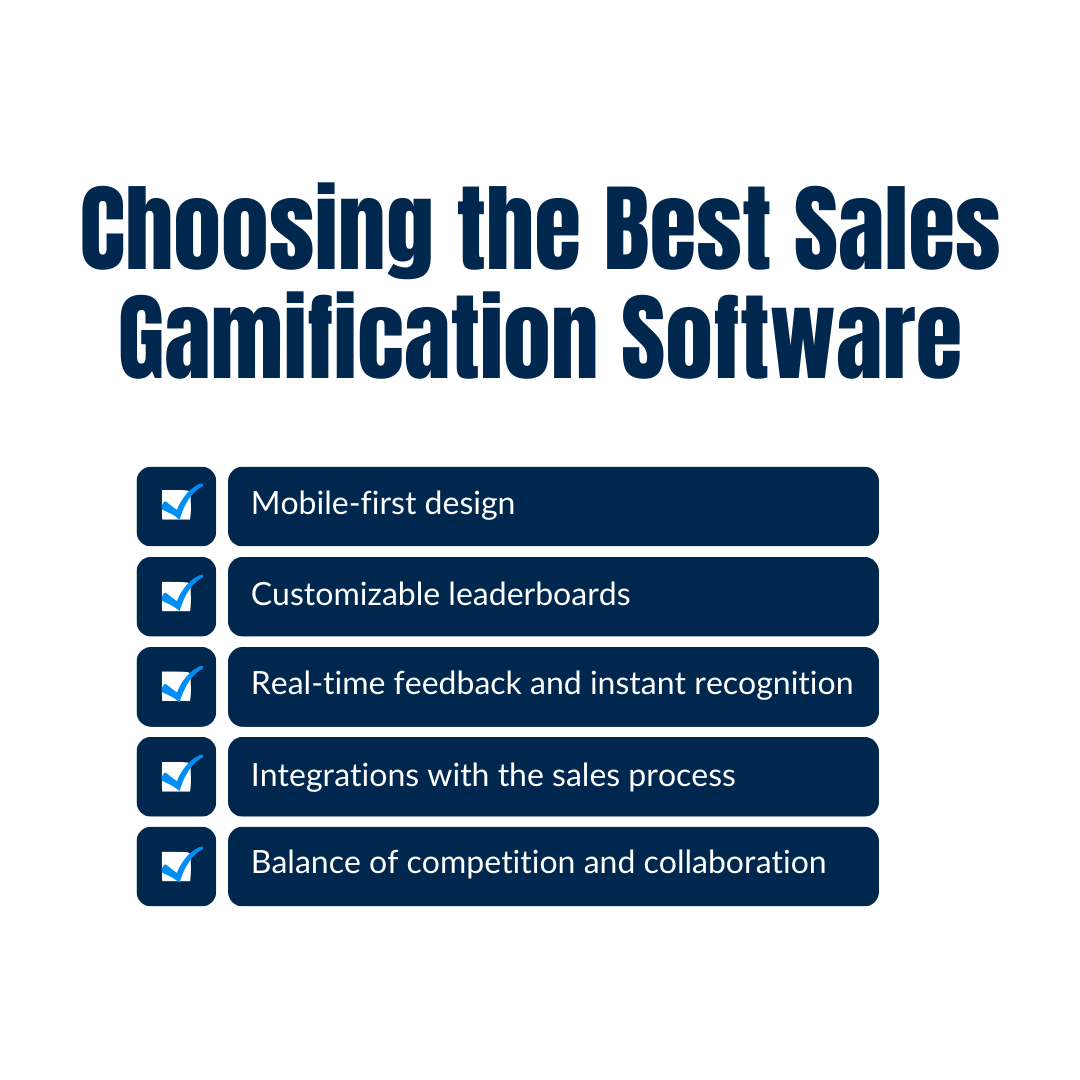
With dozens of sales gamification tools on the market, not every platform delivers the same value. The right choice depends on how well the tool aligns with your team’s size, goals, and overall sales process.
A flashy leaderboard won’t fix low engagement if the software doesn’t provide visibility, feedback, and flexibility.
Here’s what to look for when deciding on the best sales gamification software for your team.
Must-have features to consider
- Mobile-first design: Especially important for field sales teams who work on the go. Reps should be able to log activity, check leaderboards, and receive recognition in real time on their phones.
- Customizable leaderboards: Not every rep should be competing on the same metric. Look for tools that let you filter by territory, role, or time period so competition stays fair and motivating.
- Real-time feedback and instant recognition: The software should update scores, points, and notifications immediately. Anything less weakens the motivational loop that gamification relies on.
- Integrations with the sales process: The best platforms don’t sit on the sidelines. They integrate directly into your CRM and existing workflows so gamification feels like a natural extension of the sales process, not an extra chore.
- Balance of competition and collaboration: The best systems allow for both individual contests and team-based goals, so you can encourage competitive spirit without creating toxic rivalries.
- Scalability and cloud-based architecture: As businesses grow, the software should scale effortlessly to accommodate more users, larger teams, and multiple departments.
- AI-Powered Insights & Recommendations: AI can analyze rep behavior and suggest next best actions or optimal challenges. This transforms gamification from “fun tracking” into a growth-driving tool.
See The Impact of Canvassing Software on Sales Team Performance for more insights.
How to choose sales gamification software
- Start with your team’s challenges. If engagement is low because of delayed recognition, prioritize real-time feedback. If field reps feel disconnected, prioritize mobile access.
- Evaluate usability. A tool that feels clunky won’t get adopted. Ask: Can a rep check progress in under 30 seconds?
- Check reporting and analytics. Beyond points, does it help managers with coaching and performance insights?
- Look for scalability. Can the system grow with your team as contests, users, or sales channels expand?
How to Gamify Sales with Knockbase
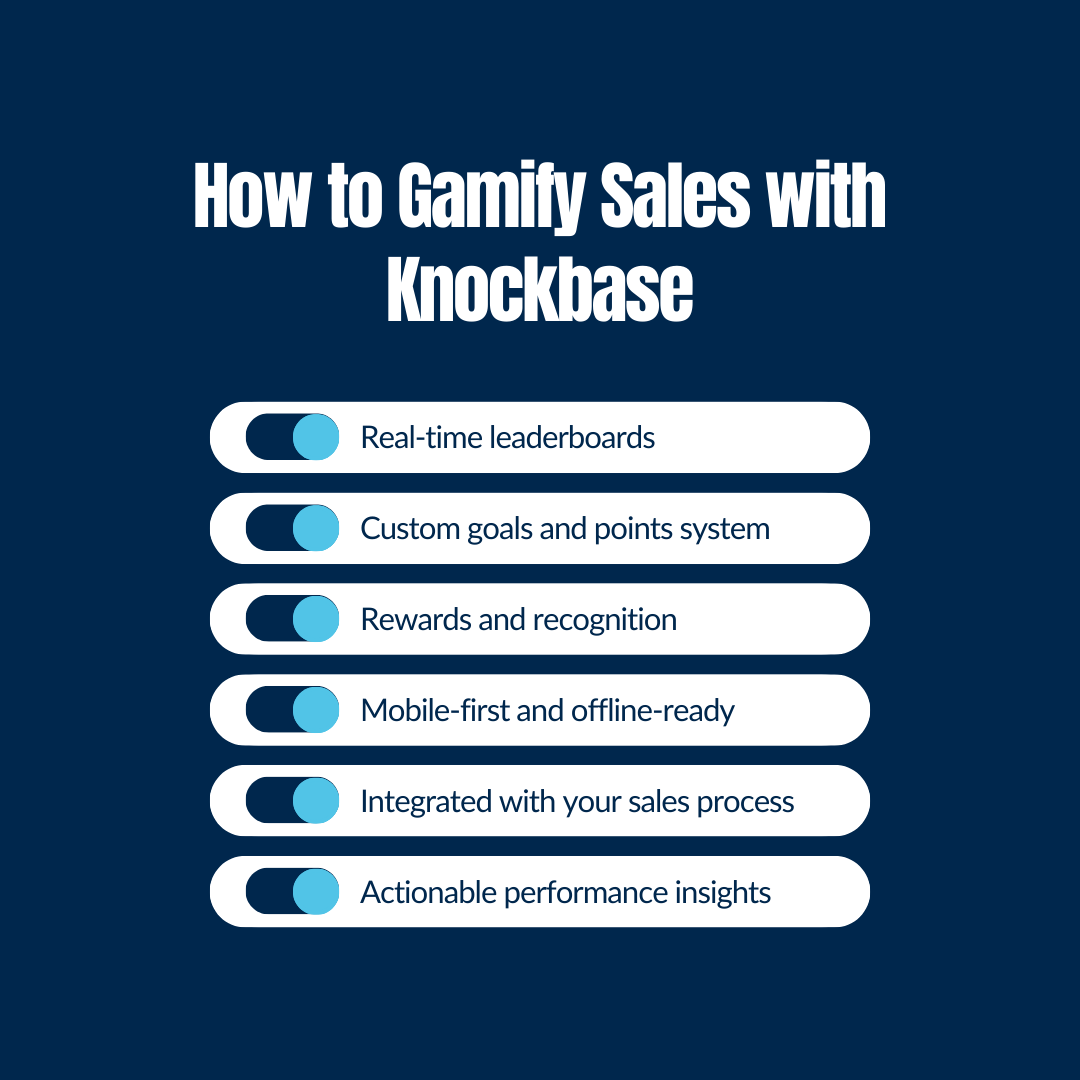
By this point, you’ve seen how gamification mechanics boost engagement and why strategy matters. The next question is: how do you put it into practice?
That’s where Knockbase comes in. Designed with flexibility and simplicity in mind, Knockbase makes it easy to launch contests, track progress, and deliver recognition.
Here’s how Knockbase helps you gamify sales in practical, measurable ways:
1. Real-time leaderboards
Knockbase leaderboards update instantly as reps log activity. Whether it’s doors knocked, calls made, or demos booked, progress is visible in real time. This keeps the competition lively and ensures every action feels meaningful.
2. Custom goals and points system
Managers can set daily, weekly, or monthly targets and assign point values to specific activities. This makes it easy to align contests with your business priorities, like more appointments or more follow-ups completed.
3. Rewards and recognition
Gamification only works if effort is acknowledged. Knockbase lets managers tie rankings to real-world perks, automate rewards when thresholds are hit, and push recognition directly to reps via app notifications and team shoutouts.
4. Mobile-first and offline-ready
Field reps don’t lose momentum when they’re away from the office. Knockbase is designed for mobile use and works even offline, so activity, leaderboards, and recognition are always accessible, no matter where the work happens.
5. Integrated with your sales process
Knockbase connects seamlessly with your CRM and sales workflows, so reps don’t waste time on duplicate logging. Activity tracked in Knockbase flows into the broader sales process, keeping data clean and making gamification a natural extension of daily work.
6. Actionable performance insights
Every activity tracked in Knockbase feeds into clear dashboards and performance reports. Managers can quickly see who’s excelling, where issues occur, and how to focus coaching efforts. Instead of generic advice, coaching becomes targeted and data-driven, helping lift your entire sales team’s performance.
Future of Sales Gamification
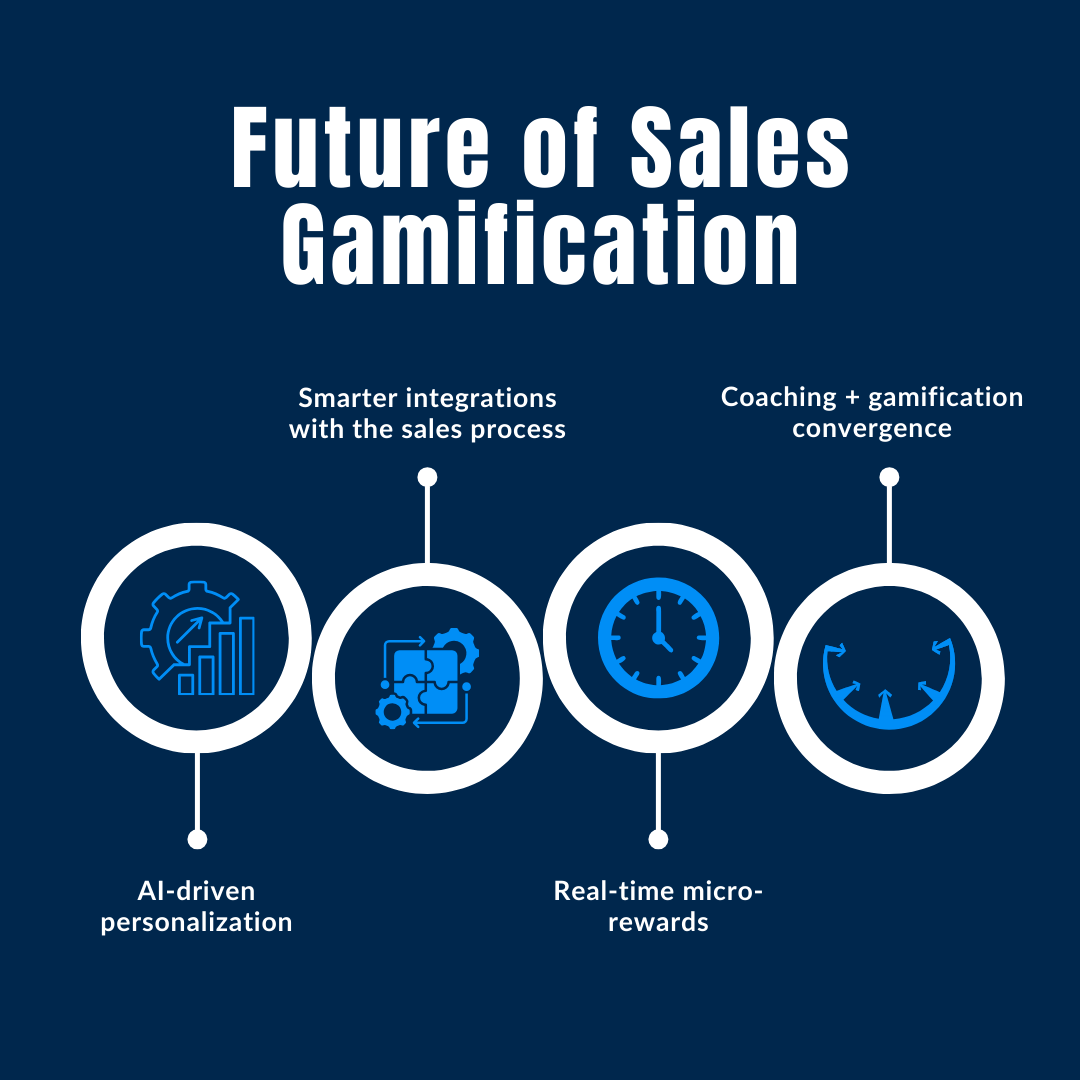
Sales gamification has already proven it can boost engagement, but the next wave will take it beyond points and leaderboards.
As sales tech evolves, gamification will become more personalized, predictive, and deeply embedded into the daily workflow. Here are a few trends shaping the future:
1. AI-driven personalization
Instead of one-size-fits-all contests, AI will analyze rep performance and automatically suggest challenges tailored to their strengths and weaknesses.
For example, one rep might be nudged to improve follow-up speed, while another gets a challenge focused on demo-to-close rates.
2. Smarter integrations with the sales process
Gamification will no longer feel like an add-on. Expect tighter links between gamification platforms and CRMs, communication tools, and sales enablement software, making progress tracking and recognition part of the natural sales process.
3. Real-time micro-rewards
The future leans even more toward instant gratification. Reps won’t just see points on a leaderboard; they’ll receive micro-rewards like coffee vouchers, team shoutouts, or digital perks the moment they complete key activities.
4. More support for field sales teams
With mobile-first design becoming standard, field sales teams will get richer offline functionality, geo-based contests, and real-time syncing. This ensures remote reps stay just as engaged and connected as in-office teams.
5. Coaching + gamification convergence
Performance data and gamification insights will increasingly fuel automated coaching prompts. Managers will be able to pinpoint skill gaps faster, while reps get nudges that encourage better habits, creating a tighter loop between learning and performance.
Summary
Sales gamification is more than points and badges; it creates a culture where effort is visible and rewarded. By using the right game mechanics, aligning them with business goals, and pairing them with strong coaching, you can keep reps motivated and engaged throughout the sales cycle.
The key is to choose sales gamification software that integrates with your workflows, delivers real-time recognition, and supports both inside and field sales teams.
When done right, gamification strengthens motivation, teamwork, and ultimately your bottom line.
Ready to Energize Your Sales Team?
If you’re looking for a tool that makes gamification seamless and effective, Knockbase brings it all together: real-time leaderboards, customizable goals, instant recognition, mobile-first design, and actionable insights that lift your sales team’s performance.
Book a demo with Knockbase today and see how simple it can be to gamify your sales process.
FAQs
1. How does gamification improve sales performance?
Gamification improves performance by increasing engagement and accountability. Reps receive recognition in real time, which reinforces good habits, while managers gain visibility into behaviors that drive outcomes. This combination leads to higher activity levels, stronger pipelines, and more consistent results.
2. What are the best game mechanics to motivate sales reps?
The most effective mechanics include points and badges (to reward effort), leaderboards (to spark healthy competition), contests (to create bursts of activity), progress bars (to visualize goals), and rewards or recognition (to reinforce positive behavior).
3. How to choose sales gamification software for field sales teams?
Look for mobile-first software that works offline and updates leaderboards in real time. It should integrate with your CRM so reps don’t double-log data, and allow region-based or team-based leaderboards to keep competition relevant for field sales teams.


